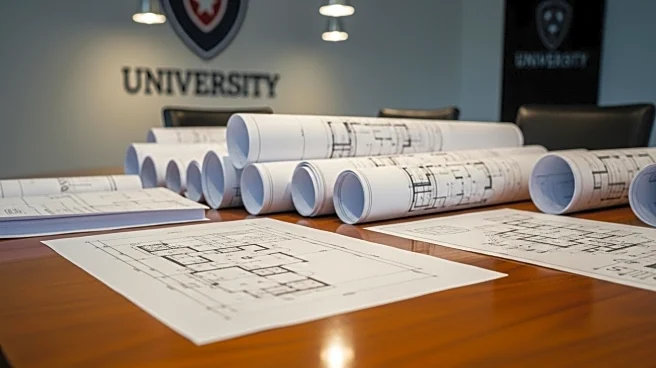What's Happening?
The North Eastern Universities Purchasing Consortium (NEUPC) has awarded a £200 million, six-year university refurbishment framework to 41 contractors, including GMI, Morris & Spottiswood, Robertson, Tilbury Douglas, and Wates. This framework aims to cover a wide range of upgrade and fit-out works across higher education buildings in England. The agreement, which will run until June 2031, is open to NEUPC members and affiliates. The framework was put out to tender in December 2024 and is divided into four lots based on project value, with each lot further divided into regional sub-lots. Projects under this framework include the refurbishment of laboratories, lecture theatres, libraries, plant rooms, kitchens, accommodation blocks, and offices, potentially involving buildings of varying age and condition, including heritage and listed sites.
Why It's Important?
This framework is significant as it provides a compliant route to market for universities seeking to undertake small, medium, and complex refurbishment projects. By involving a wide range of contractors, the framework supports the development and modernization of educational infrastructure, which is crucial for maintaining competitive and up-to-date learning environments. The inclusion of small and medium-sized enterprises in the bidding process promotes economic growth and job creation within the construction sector. However, the exclusion of voluntary and community sector firms may limit opportunities for these groups to participate in public sector projects.
What's Next?
Individual projects under the framework will be awarded through further competition, allowing all named suppliers to bid. This competitive process ensures that universities can select the most suitable contractors for specific projects, potentially leading to cost-effective and high-quality outcomes. As the framework progresses, stakeholders such as educational institutions, contractors, and local communities will likely monitor its impact on the modernization of university facilities and the broader economic benefits it may bring.
Beyond the Headlines
The framework's focus on refurbishing heritage and listed sites highlights the importance of preserving historical architecture while upgrading facilities to meet modern standards. This approach balances the need for innovation with the conservation of cultural heritage, reflecting broader societal values around sustainability and historical preservation.













